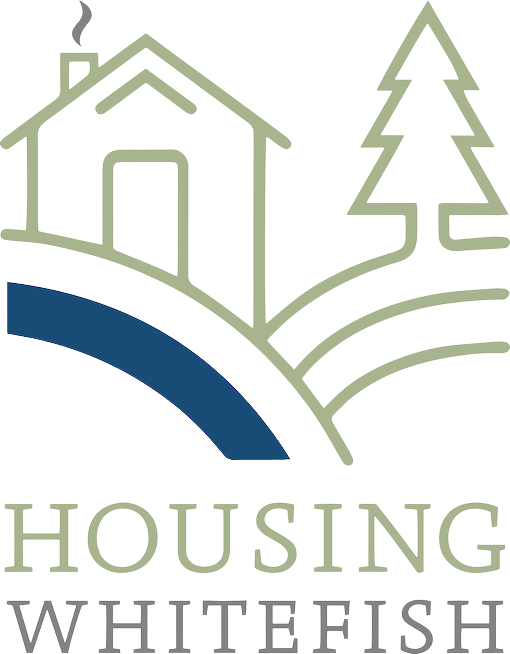Time to house hack, Whitefish
Every few years when the City of Whitefish updates its Housing Needs Assessment, we are hit with a statement that is similar to that of the 2025 assessment: “In order to keep up with existing and projected future housing demand, the City of Whitefish needs to add somewhere between 930 - 1,500 new units to the housing inventory over the next 10 years.”
Assertions like this always get the community in a tizzy, and undoubtedly, will provide fuel for public comments in support or against housing developments for the following 10 years. I don’t have any qualms with the validity of the statement. The estimates are well explained and backed up with projections, definitions, and calculations that I find dependable and use myself.
Where I take issue is when peeling back the layers and reviewing the basic assumption that is made: all new households will need their own separate home to accommodate the anticipated population growth.
Go ahead and think on that for a moment. Now, let’s take a step back and ask a simple question - what is the problem we are trying to solve? On the most basic level, it can be boiled down to this: the community is growing, and we need more places for people to live. For many, the obvious answer to this problem is to build more housing units to accommodate the new households. That is fine, but the Housing Needs Assessment will then tell you that 75% of those units need to be affordable for low to middle-income households.
That is where I press pause. Building new units and making them “Affordable” will require major subsidies and incentives. If we somehow accomplish this, something systematically will have to have changed in how we build and finance homes or apartments. Frankly put, there is hardly any incentive to build low-priced rentals or entry-level homes to buy in our current environment.
So, what are you proposing?
I’ll start with a question that one of my favorite organizations, Strong Towns, poses when working on challenging problems: what is the next easiest thing you can do to solve the problem? Restated for our current conversation: what can we do tomorrow that will have a meaningful impact in creating more housing opportunities in Whitefish?
Here’s how I think about it. There are approximately 5,700 housing units in Whitefish today. If we make an estimate, which is probably low, that the average home has 2 bedrooms, that is more than enough bedrooms to accommodate our current population (~9,163) and our projected population in 2035 (~11,120). In other words, this isn’t a “number of bedrooms” issue.
Before I lose you – I’m not some free love, let’s all live together and sing songs type of person. While I have an extra room in my home, having a roommate is not on the table for my family (we are exploring an ADU though!). For many people, however, roommates could, and I would argue, should, be a viable option.
As a starting point, there are approximately 510 cost-burdened homeowner households (paying over 30% of their income on housing costs) in the City of Whitefish.* For the sake of argument, let’s say only a quarter have an open room and are open to roommates. That is 128 rooms that could be available to rent by the end of the week. Reviewing data Housing Whitefish collects from the Workforce Rental Assistance Program (n=153 applicants), we know that “single people living with roommates” pay on average $941/month in rent and “single people living alone” pay on average $1,381/month. Saving you the math, that is $440/month that roommates are saving compared to living alone.
From a family budget perspective, a homeowner with an open room in their home could fetch upwards of $941/month, while providing an affordable alternative for someone with limited options and living alone. Saving the social stigma conversation about having roommates for another day, the economic incentive for both homeowner and renter are clear.
Going back to the problem statement from above – the community is growing, and we need more places for people to live – I believe we need diverse housing solutions to meet the scale of the problem. It’s time to house hack, Whitefish. Roommates, housemates, co-living, co-housing, cooperative living, boarding houses – whatever you call it, let’s talk about how we get more of it. In my opinion, it’s next easiest thing we can do to add more housing units in Whitefish at scale and at speed. It won’t work for everyone, but it should be a bigger piece of the puzzle.
Don’t just take my word for it. There are organizations and companies working on this very thing. The aforementioned Strong Towns is a thought leader on this subject, and companies like PadSplit are working out the back-end technology to make it easier than ever to rent your spare room.
What we need now is to take back control in the housing affordability conversation. We don’t need someone to come save us and build 1,000 new homes. We need neighbors willing to work together to provide common-sense, community minded solutions.
Daniel Sidder is the executive director of Housing Whitefish, a nonprofit working on housing affordability issues in our community. Visit www.housingwhitefish.org for more information.
*There are an estimated 5,700 housing units in Whitefish. Off the top take out the approximately 978 “vacant” homes that are occupied seasonally or for recreational purposes. Of the remaining ~4,722, 60% are estimated to be owner-occupied. From there, the 2023 ACS 5-year Estimates show about 18% of owner-occupied homes are cost-burdened, paying more than 30% of their total income to housing costs.
View on WhitefishPilot.com

